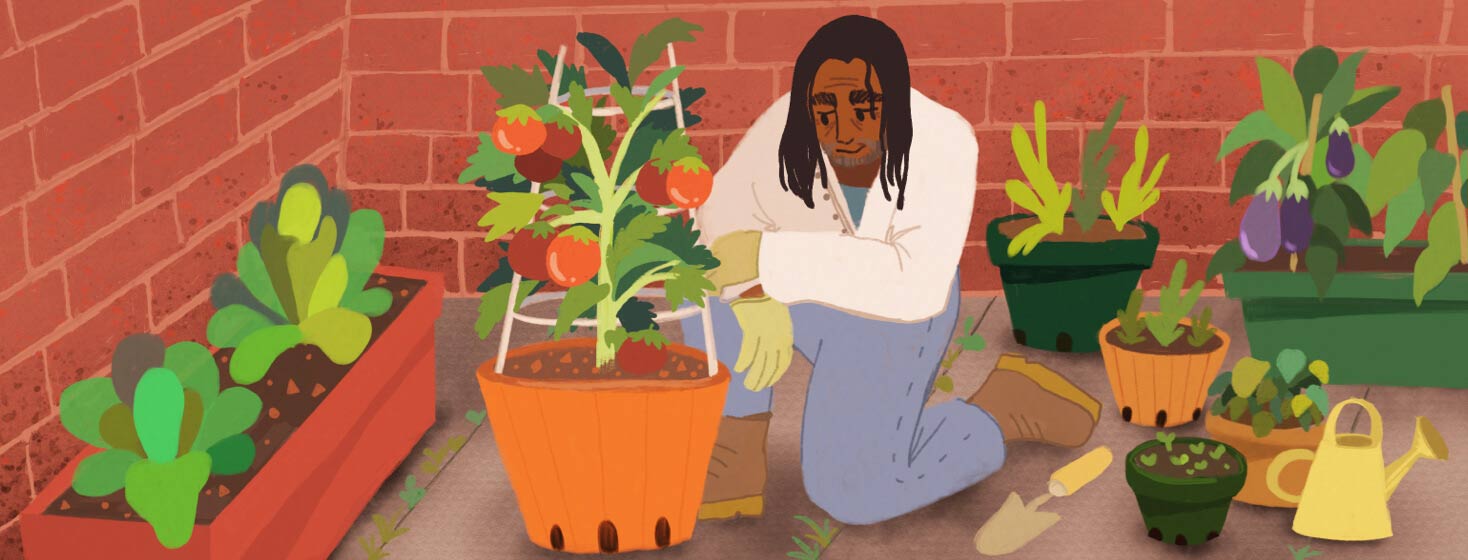Gardening on a Budget
When it comes to eating healthy, it can be a challenge to do so cheaply when living with heart failure and on a budget. This is especially true when unhealthy fast-food chains sell entire meals for less than $10. Not to mention, you don’t risk wasting food like you may buying fresh produce.
Grocery stores and variety
Grocery stores
Grocery stores almost force you into buying more food than you can eat by offering discounts when you buy more of a product. It’s very difficult to eat all the food you buy if you want a variety. You could eat the same thing every day until it’s gone, but that isn’t a great way to stay on an eating plan.
Variety
Boredom and lack of variety are arguably two of the top reasons an eating plan fails. A cheap way to add variety is to garden. You can grow fruits, vegetables, and herbs. Here are a few ideas on how to grow food at home on a budget.
Growing food on a budget
No yard
First, we will start with a home that does not have the ability to have a garden in the yard or doesn’t have a yard. Pots are the only way you can really garden, so I would look online for people giving away free pots. You could also ask garden centers if they are giving away any plastic pots. Soil can be found online usually, but if not, it may be best to buy some bags of compost. It is only a few dollars a bag. Now all you need are the plants, which we will get to later.
Yard
Now, we will talk about those with a yard who can garden. The cheapest way is to do a no-dig garden. Get some free cardboard from a store and lay that down on the ground. This will help kill weeds. Next, you will want to lay grass clippings and leaves on top of the cardboard about 3 inches thick. You can also mix in compostable waste from your kitchen like fruit and veggie scraps.
Preparation
Once this is done, you can place another layer of shredded cardboard on top about 6 inches deep, repeat with grass clippings and cardboard one more time. Make sure to keep it moist to allow for decomposition. Once the material can be handled like dirt, it is ready to use. This can take multiple months for proper soil and should be repeated yearly.
Seeds
Produce with mature seeds
Finally, we have to get the seeds for our plants. Seeds can be found online or in stores for less than a dollar, but you can also get them from your produce at the store. Fruits and vegetables that are easiest grown from store-bought vegetables are tomatoes, peppers, potatoes, melons, garlic, and eggplants. These are the easiest because you buy the produce with mature seeds.
Tricks of the trade
One trick with bell peppers is to only try to grow seeds from red, orange, or yellow peppers. Green peppers are usually immature peppers. They have not matured to their final color of either red, orange, or yellow. These seeds may not germinate. Also, try to buy heirloom veggies if they are marked. If they are hybrid, they may not grow or produce fruit that is the same as what you bought.
Healthier and cheaper
Hopefully, this will help you grow some of those veggies at home that you buy at the store and save some money. They will also be healthier when grown at home. There is no reason to spend extra money on produce we are just going to throw away. You can grow an entire garden worth of fruit and veggies from your store produce. Like many of us with heart failure know, it can be an expensive condition, so saving money and eating healthy is worth investing in.

Join the conversation